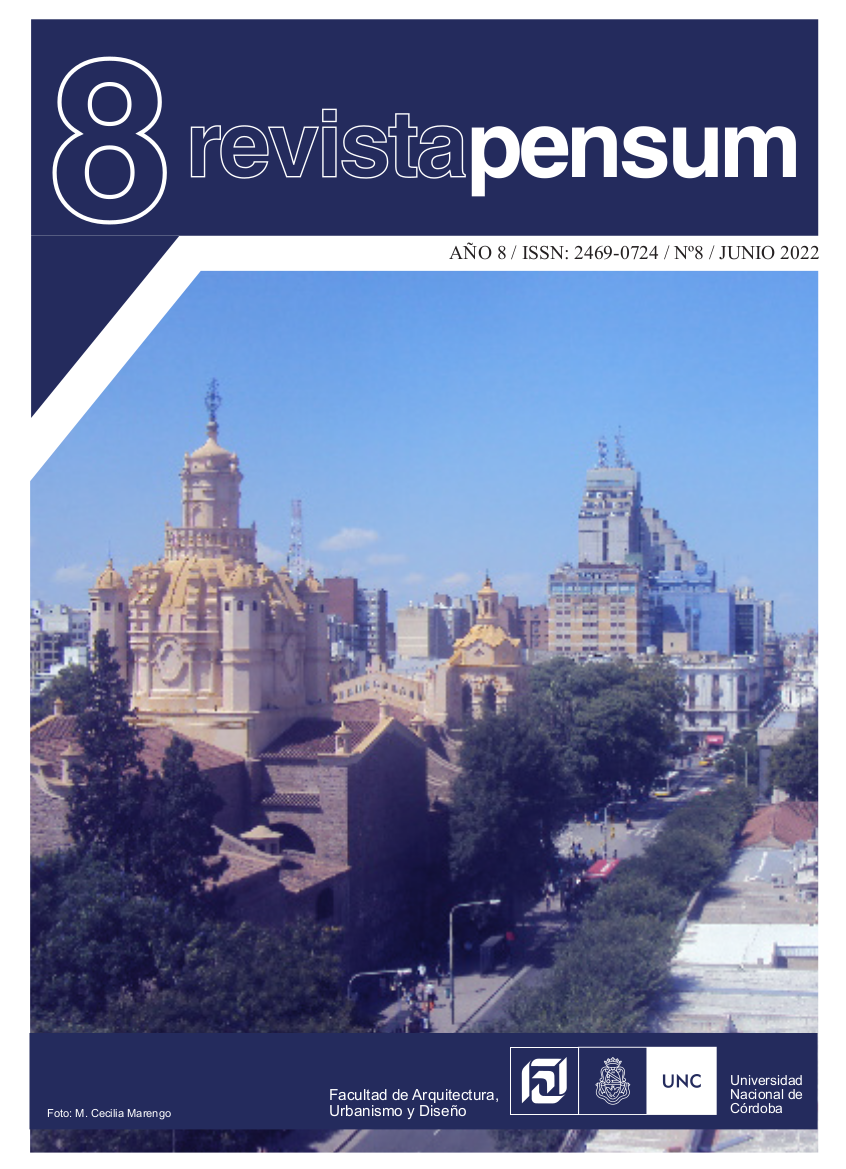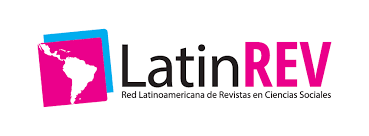Public urban green space.
Endowment, Distribution and Accessibility. Case study Loja – Ecuador
DOI:
https://doi.org/10.59047/2469.0724.v8.n8.34668Keywords:
Public green space, endowment, distribution, accessibility, intermediate cityAbstract
It is widely recognized in the literature that urban greenery contributes to climate mitigation, public health, biodiversity conservation, and the well-being of the population. The COVID-19 pandemic revealed that inequality in access to public green spaces has a global scale. The present study is carried out in the city of Loja - Ecuador and seeks to determine if the provision and spatial distribution of the public green condition the accessibility of the population. Public green is categorized and the endowment is measured using the urban green index (IVU), the spatial distribution in the city is analyzed and the level of accessibility is assessed through proximity and walking distances to finally establish the correlation between variables. The results show that the provision of public green in the city (6.22 m2/hab.) does not meet the minimum parameters recommended by the WHO and the spatial distribution is unequal. 80.86% of the population and 60.33% of the vulnerable population (older adults and children) have access to at least one green space. The statistical analysis shows that the endowment and distribution of the public green do not condition the accessibility of the population.
Downloads
References
Ajuntament de Barcelona. (2013). Diagnosis del verde (2009-2019). En: Plan del verde y de la biodiversidad de Barcelona 2020, 41.
Alberto, F., Burgos, G., Carlos, J., & Otero, P. D. (2015). Variables microscópicas en la velocidad de caminata. Ingenieria de Transporte, 19(2012), 143–154.
Alcock, I., White, M. P., Wheeler, B. W., Fleming, L. E., & Depledge, M. H. (2014). Longitudinal effects on mental health of moving to greener and less green urban areas. Environmental Science and Technology, 48(2), 1247–1255. http://doi.org/10.1021/es403688w
Ahn, J. J., Kim, Y., Lucio, J., Corley, E. A., & Bentley, M. (2020). Green spaces and heterogeneous social groups in the U.S. Urban Forestry and Urban Greening, 49(September 2019), 126637. https://doi.org/10.1016/j.ufug.2020.126637
Almohamad, H., Knaack, A. L., & Habib, B. M. (2018). Assessing spatial equity and accessibility of public green spaces in Aleppo City, Syria. Forests, 9(11). https://doi.org/10.3390/f9110706
Bahriny, F., & Bell, S. (2020). Patterns of urban park use and their relationship to factors of quality: A case study of tehran, Iran. Sustainability (Switzerland), 12(4), 1–33. https://doi.org/10.3390/su12041560
Boulton, C., Dedekorkut-Howes, A., Holden, M., & Byrne, J. (2020). Under pressure: Factors shaping urban greenspace provision in a mid-sized city. Cities, 106. https://doi.org/10.1016/j.cities.2020.102816
Camino, M. A., Bó, M. J., Cionchi, J. L., Armentia, A. L. De, Río, J. L. Del, & Marco, S. G. De. (2018). Estudio morfométrico de las cuencas de drenaje de la vertiente sur del sudeste de la provincia de Buenos Aires (Argentina). Revista Universitaria de Geografía, 27(1), 73–97.
Coq-huelva, D., & Asián-Chaves, R. (2019). Urban Sprawl and Sustainable Urban Policies. A Review of the Cases of Lima, Mexico City and Santiago de Chile. Sustainability (Switzerland).
De la Concha, C. (2008). El origen y las características de los fragmentos urbano-públicos residuales. Cuadernos Geográficos, 42
Ekkel, E. D., & Vries, S. (2017). Landscape and Urban Planning Nearby green space and human health: Evaluating accessibility metrics. Landscape and Urban Planning, 157, 214–220. http://doi.org/10.1016/j.landurbplan.2016.06.008
Feiber, S. D. (2004). Áreas Verdes Urbanas Imagem e Uso – o Caso Do Passeio Público de Curitiba-PR. RA’E GA - O Espaco Geografico Em Analise, 8(8), 93–105. http://doi.org/10.5380/raega.v8i0.3385
Feng, S., Chen, L., Sun, R., Feng, Z., Li, J., Khan, M. S., & Jing, Y. (2019). The distribution and accessibility of urban parks in Beijing, China: Implications of social equity. International Journal of Environmental Research and Public Health, 16(24). https://doi.org/10.3390/ijerph16244894
GAD Municipal de Loja. (2014). Reforma a la ordenanza que delimita y estructura las parroquias urbanas del cantón Loja.
Grunewald, K., Richter, B., Meinel, G., Herold, H., & Syrbe, R. U. (2017). Proposal of indicators regarding the provision and accessibility of green spaces for assessing the ecosystem service “recreation in the city” in Germany. International Journal of Biodiversity Science, Ecosystem Services and Management, 13(2), 26–39. https://doi.org/10.1080/21513732.2017.1283361
Hermida Palacios, M. A., Orellana Vintimilla, D. A., Cabrera Jara, N. E., Osorio Guerrero, P., & Calle Figueroa, C. (2015). La ciudad es esto: medición y representación espacial para ciudades compactas y sustentables. Universidad de Cuenca. Retrieved from http://dspace.ucuenca.edu.ec/handle/123456789/21564
Hoffimann, E., Barros, H., & Ribeiro, A. I. (2017). Socioeconomic inequalities in green space quality and Accessibility—Evidence from a Southern European city. International Journal of Environmental Research and Public Health, 14(8). https://doi.org/10.3390/ijerph14080916
INEC (2012). Índice Verde Urbano. Retrieve from https://www.ecuadorencifras.gob.ec/documentos/web-inec/Encuestas_Ambientales/Verde_Urbano/Presentacion_Indice%20Verde%20Urbano%20-%202012.pdf
Jarvis, I., Gergel, S., Koehoorn, M., & Bosch, M. (2020). Landscape and Urban Planning Greenspace access does not correspond to nature exposure: Measures of urban natural space with implications for health research. Landscape and Urban Planning, 194(October 2019), 103686. http://doi.org/10.1016/j.landurbplan.2019.103686
Liang, H., Chen, D., & Zhang, Q. (2016). Walking accessibility of urban parks in a compactmegacity. Institution of Civil Engineers, 1–13.
Naciones Unidas. (2015). Objetivos de Desarrollo Sostenible. Retrieved from https://www.un.org/sustainabledevelopment/es/
Nucci, J. C. (2008). Qualidade Ambiental E Adensamento Urbano. Retrieved from http://www.geografia.ufpr.br/laboratorios/labs
Qiu, J., Bai, Y., Hu, Y., Wang, T., Zhang, P., & Xu, C. (2019). Urban Green Space Accessibility Evaluation Using Age-Based 2-Step Floating Catchment Area Method. IGARSS 2019 - 2019 IEEE International Geoscience and Remote Sensing Symposium, 7490–7493
Reyes, S., & Figueroa, I. (2010). Distribución, superficie y accesibilidad de las áreas verdes en Santiago de Chile. Eure. 36, 89–110.
Rodríguez, M. J., Bisbal, I., & Ontiveros De La Fuente, E. (2011). Forma Y Ciudad En los Límites de la Arquitectura y el Urbanismo. España: Cinter Divulgación Técnica.
Rueda, S., De Cáceres, R., Cuchí, A., & Brau, L. (2012). El urbanismo ecológico. Agenciade Ecología Urbana de Barcelona, Barcelona.
Ruiz-luna, A., Bautista, R., Hernández-guzmán, R., & Camacho-valdez, V. (2019). Uneven distribution of urban green spaces in a coastal city in northwest Mexico. Local Environment, 9839, 458–472. http://doi.org/10.1080/13549839.2019.1590324
Servicio Ecuatoriano de Normalización INEN. (2016). Accesibilidad de las personas al medio físico. Rampas. Quito.
Shen, Y., Sun, F., & Che, Y. (2017). Public green spaces and human wellbeing: Mapping the spatial inequity and mismatching status of public green space in the Central City of Shanghai. Urban Forestry and Urban Greening, 27(August 2016), 59–68. https://doi.org/10.1016/j.ufug.2017.06.018
Tan, P. Y., & Samsudin, R. (2017). Effects of spatial scale on assessment of spatial equity of urban park provision. Landscape and Urban Planning, 158, 139–154. https://doi.org/10.1016/j.landurbplan.2016.11.001
Tapia, F., Rodríguez, J. (2004). Criterios de Base para la Planificación de Sistemas Verdes y Sistemas Viarios Sostenibles en las Ciudades Andaluzas Acogidas al Programa CIUDAD 21. Obtenido de http://habitat.aq.upm.es/lbl/guias/and-2004-criterios-sost-sist-verdes-y-viarios.pdf
Terraza, Rubio & Vera F. (2016). De ciudades emergentes a ciudades sostenibles. Santiago de Chile. Pontificia Universidad Santiago de Chile.
Published
How to Cite
Issue
Section
License
Copyright (c) 2022 Sandra Vanessa Valarezo Jaramillo

This work is licensed under a Creative Commons Attribution-ShareAlike 4.0 International License.
Authors who publish in this journal agree to the following terms:
a. Authors retain copyright and guarantee to the journal the right to be the first publication of the work as well as licensed under a Creative Commons Attribution-ShareAlike 4 license.
b. Authors may separately establish additional agreements for non-exclusive distribution of the version of the work published in the journal (e.g., placing it in an institutional repository or publishing it in a book), with an acknowledgement of its initial publication in this journal.
c. Authors are permitted and encouraged to disseminate their work electronically (e.g., in institutional repositories or on their own website) before and during the submission process, as this may result in productive exchanges, as well as earlier and greater citation of published work (See The Effect of Open Access).
d. 4.0 International Creative Commons Attribution-ShareAlike 4.0 License.












